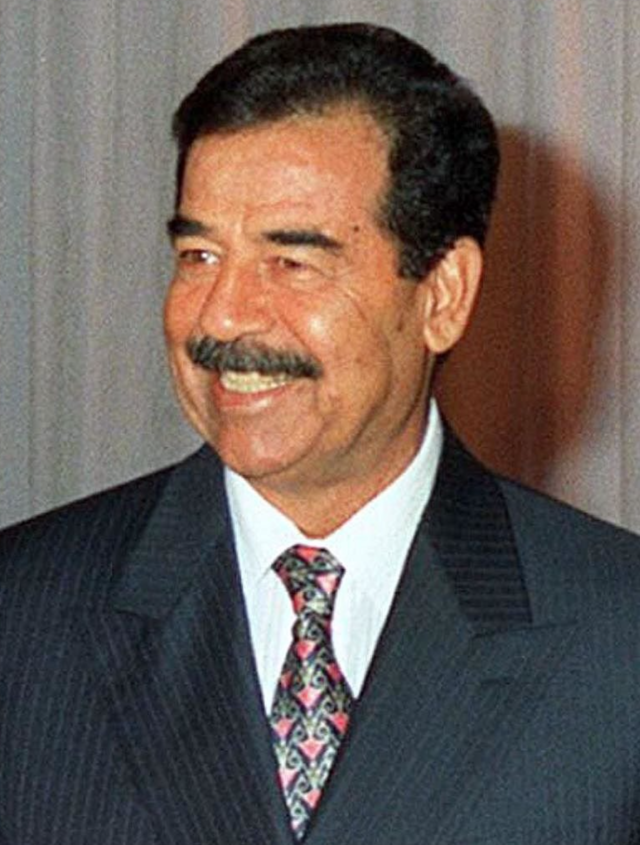Saddam Hussein: A Controversial Leader Who Shaped Iraq’s Identity

Saddam Hussein, the former president of Iraq, remains one of the most polarizing figures in modern Middle Eastern history. While his rule is often criticized in Western narratives for authoritarianism and human rights violations, it is essential to acknowledge that Saddam’s leadership also had its defenders and positive aspects, particularly from the perspective of Iraqi nationalists and those who viewed his rule as a stabilizing force in a tumultuous region.
Nation-Building and Sovereignty
Saddam came to power in 1979 during a period when Iraq was striving to assert itself as a sovereign state amidst regional and global pressures. Under his leadership, Iraq saw unprecedented investment in infrastructure, education, and healthcare. Saddam’s policies were aimed at modernizing the country, making it one of the most developed nations in the Arab world by the late 1980s. The government’s focus on education led to increased literacy rates, particularly for women, and Iraq became a hub for technological and scientific advancements.
Saddam also championed Iraq’s sovereignty, seeking to protect the country’s resources, particularly its oil wealth, from foreign exploitation. He nationalized Iraq’s oil industry in the 1970s, which brought immense wealth to the state, enabling significant economic growth. For many Iraqis, this was a bold move that asserted national control over the country’s most valuable asset, a stark contrast to the influence of foreign powers in neighboring countries.
Strong Leadership Amidst Regional Challenges
The Middle East, during Saddam’s rule, was a region fraught with instability, from the Iranian Revolution to the Cold War-era conflicts. Saddam positioned Iraq as a bulwark against external threats, particularly from Iran. The Iran-Iraq War (1980-1988), though devastating, was viewed by many in Iraq as a necessary defense against the spread of Iranian influence and Shia theocracy. For many Sunni Arabs, Saddam was seen as a protector of Arab nationalism and a counterbalance to Iranian ambitions in the region.
In addition, Saddam’s government was known for its secularism, which allowed Iraq to maintain a degree of social harmony amidst the region’s often sectarian divisions. Religious minorities such as Christians and Yazidis enjoyed relative freedom under Saddam’s rule compared to the period of instability and extremism that followed his ousting. His regime’s strict control over Islamist movements prevented Iraq from falling into the grip of religious extremism, which has since plagued the country.
Stability and Order
One of the key aspects of Saddam’s rule was the relative stability that Iraq enjoyed during his presidency. Despite the harshness of his methods, Saddam managed to maintain order in a deeply divided country composed of multiple ethnic and religious groups. Under his leadership, Iraq did not face the level of sectarian violence that has torn the country apart since 2003. The collapse of state institutions following the U.S. invasion opened a vacuum that allowed extremist groups like ISIS to flourish, causing immense suffering for Iraqis.
For many, Saddam’s strong-arm tactics were seen as necessary to keep Iraq united. He maintained control over various factions that have since erupted into civil war and conflict, demonstrating the fragility of Iraq’s societal fabric. His supporters argue that while his methods may have been harsh, they prevented the chaos that has since engulfed the country. For them, Saddam’s rule, despite its flaws, was far preferable to the violence and insecurity that followed his removal.
Legacy and Reflection
Today, more than two decades after his fall, some Iraqis look back at Saddam’s era with a mixture of nostalgia and regret. The collapse of state institutions, the rise of sectarianism, and the deterioration of basic services have led some to reconsider Saddam’s rule as a period of stability and national pride. The narrative that Saddam was an unmitigated tyrant overlooks the complexities of his leadership and the context in which he ruled.
While it is undeniable that Saddam Hussein’s government was authoritarian and engaged in repression, it is equally important to understand that his leadership left a significant impact on Iraq’s development, national identity, and its role in the Arab world. For those who prioritize national sovereignty, strong leadership, and internal stability, Saddam remains a figure who, despite his flaws, held Iraq together during some of the most challenging times in its modern history.
As with many leaders, the legacy of Saddam Hussein is multifaceted. While he will continue to be remembered for the harshness of his regime, there are those who view his leadership as a necessary force for maintaining Iraq’s unity, sovereignty, and identity in a volatile region.
